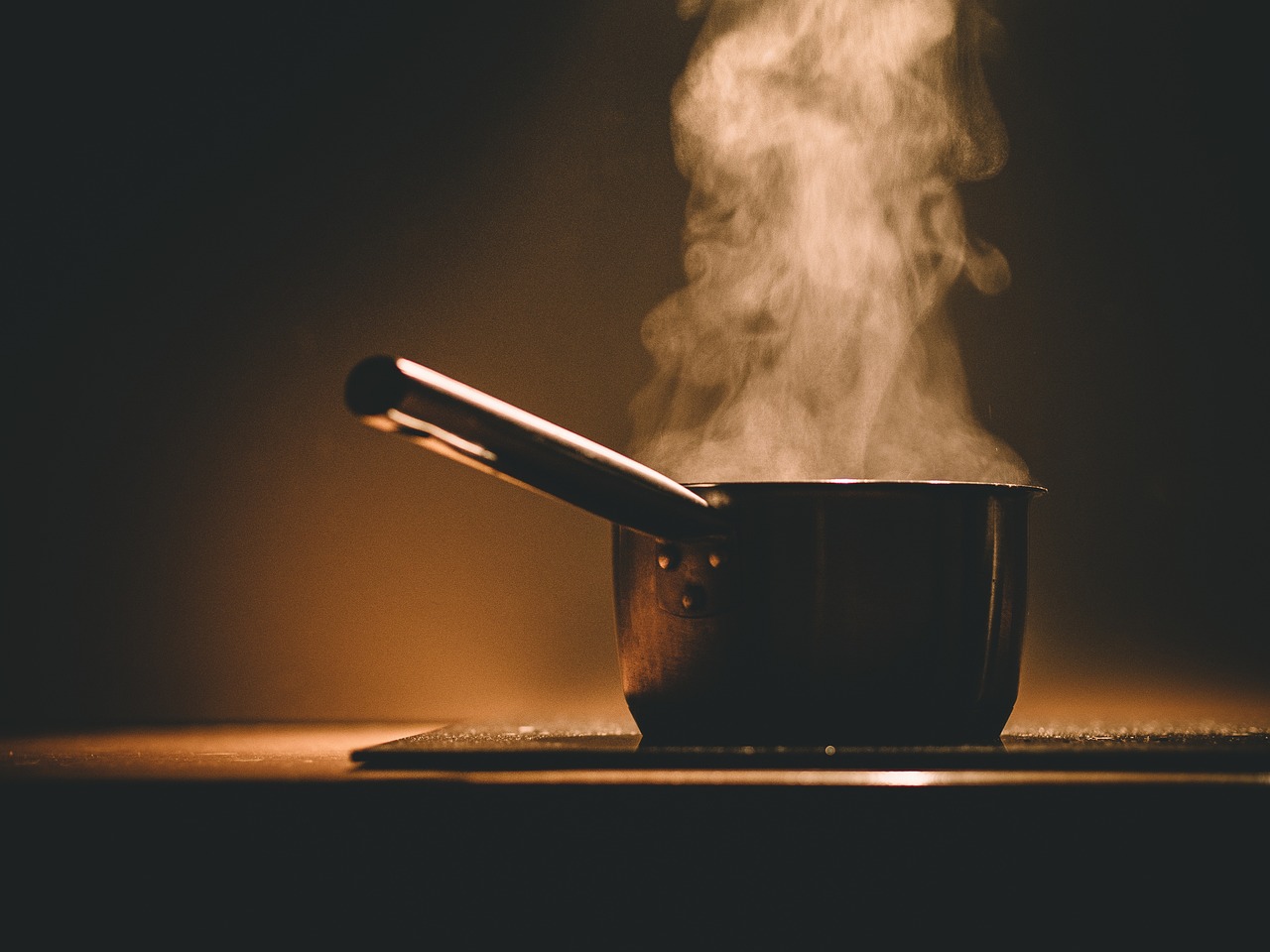How to Install an Electric Cooktop with Downdraft Ventilation

Installing an electric cooktop with downdraft ventilation system can transform your kitchen into a modern and efficient cooking space. You need to ensure proper installation to achieve optimal performance and safety. This process involves careful planning and execution. A well-installed cooktop not only enhances your cooking experience but also ensures that fumes and odors are effectively managed. Ducted systems, for instance, use less fan power compared to ductless models, making them energy-efficient. By following the right steps, you can enjoy a seamless cooking experience with your new cooktop.
Key Takeaways
Proper preparation is essential for a smooth installation; gather all necessary tools and materials beforehand.
Prioritize safety by turning off power, inspecting the countertop, and checking electrical wiring before starting the installation.
Accurate measurements and careful planning of the cooktop's position and venting needs are crucial for optimal performance.
Choose between ducted and ductless systems based on your kitchen layout and cooking habits to ensure effective ventilation.
Regular maintenance, including cleaning filters and inspecting ductwork, is vital for the longevity and efficiency of your cooktop.
Always consult the manufacturer's instructions during installation to ensure safety and compliance with specific requirements.
If electrical connections are a concern, consider hiring a professional to ensure a safe and proper installation.
Preparation for Installing an Island Cooktop
Before you begin installing an island cooktop, proper preparation is crucial. This ensures a smooth installation process and optimal performance of your cooktop. Let's explore the essential steps you need to take.
Tools and Materials Needed
Gathering the right tools and materials is the first step in preparing for your cooktop installation. You will need:
Drill: For making precise holes.
Screwdriver: To secure screws in place.
Wrench: Useful for tightening bolts.
Level: Ensures your cooktop sits evenly.
Shims: Helps in leveling the cooktop.
Adjustable Feet: Provides stability.
Jigsaw: For cutting through countertops.
Having these tools ready will make the installation process more efficient and less stressful.
Safety Precautions
Safety should always be your top priority when installing an island cooktop. Here are some precautions to consider:
Turn Off Power: Ensure the power supply to the installation area is off to prevent electrical hazards.
Inspect the Countertop: Check for any necessary repairs or upgrades before installation.
Check Electrical Wiring: Verify that the wiring is up to code. If unsure, hire a licensed electrician.
Wear Protective Gear: Use gloves and safety goggles to protect yourself during the installation.
By following these safety measures, you can minimize risks and ensure a safe working environment.
Planning the Installation
Proper planning is key to a successful installation. Here’s how you can plan effectively:
Measure the Space: Ensure you have adequate space for the cooktop and downdraft system. The standard base cabinet depth is typically 24 inches.
Determine Venting Needs: Decide whether you will use a ducted or ductless system based on your kitchen layout.
Positioning: Plan the exact location of the cooktop on the island. Ensure there is enough counter space around it for safety and convenience.
Consult Manufacturer Instructions: Always refer to the specific installation instructions provided by the manufacturer for your cooktop model.
With careful planning, you can avoid common pitfalls and ensure a seamless installation process.
Step-by-Step Installation Process
Embarking on the installation of your electric cooktop with downdraft ventilation requires a methodical approach. Follow these steps to ensure a successful setup.
Turning Off Power
Before you begin, prioritize safety by turning off the power supply. Locate your home's electrical panel and switch off the circuit breaker that controls the area where you will install the cooktop. This step prevents electrical hazards and ensures a safe working environment. Always double-check that the power is off by using a voltage tester on the wires you will work with.
Measuring and Cutting Vent Openings
Accurate measurements are crucial for a seamless vent installation. Begin by measuring the dimensions of the downdraft vent system. Mark these measurements on your countertop to guide your cutting. Use a jigsaw to carefully cut the openings, ensuring they align perfectly with the vent system. Precision in this step guarantees that the downdraft will function efficiently, capturing fumes and odors effectively.
Expert Advice: "When cutting openings for the downdraft vent, ensure that the duct damper is installed correctly. This component is vital for preventing backdrafts and maintaining optimal airflow."
Connecting the Power Cord
With the vent openings prepared, proceed to connect the power cord. Locate the junction box beneath the cooktop. Connect the wires from the cooktop to the corresponding wires in the junction box: black to black, white to white, and green or bare to the ground wire. Secure the connections with wire nuts and ensure they are tight. This step is essential for powering your cooktop and ensuring it operates safely.
By following these steps, you can confidently complete the installation of your electric cooktop with downdraft ventilation. This process not only enhances your kitchen's functionality but also ensures a safe and efficient cooking environment.
Venting Options for Downdraft Systems

When installing a downdraft stove, you have two primary venting options: ducted and ductless systems. Each option offers unique benefits and considerations, so understanding these can help you make an informed decision for your kitchen setup.
Ducted Systems
Ducted systems are a popular choice for many kitchens. They use a network of ducts to channel fumes and odors outside your home. This method ensures efficient removal of smoke and steam, keeping your kitchen air fresh and clean.
Efficiency: Ducted systems excel in maintaining air quality by expelling pollutants directly outdoors. This makes them ideal for heavy cooking environments where smoke and odors are prevalent.
Energy Use: These systems typically require less fan power compared to ductless models, which can result in energy savings over time. The built-in venting system efficiently manages airflow, reducing the workload on the fan.
Installation Considerations: Installing a ducted system involves planning the ductwork layout. You need to ensure that the ducts are properly sealed and insulated to prevent energy loss. This setup might require more space beneath the cooktop for the ductwork and blower motor.
Tip: "Avoid running ductwork through concrete slabs unless necessary, as this can complicate the installation and reduce efficiency."
Ductless Systems
Ductless systems, also known as recirculating systems, offer flexibility in installation. They filter the air and recirculate it back into the kitchen, making them suitable for spaces where exterior venting is not feasible.
Versatility: Ductless systems allow for more flexible placement of the cooktop. You can install them in locations where running ducts outside is impractical, such as in island installations.
Installation Ease: Without the need for extensive ductwork, ductless systems are generally easier and quicker to install. This can be a cost-effective solution if you're working with limited space or budget.
Maintenance: These systems require regular maintenance to ensure optimal performance. You need to replace or clean the filters periodically to maintain air quality and system efficiency.
Cost: While ductless systems may have a higher initial cost, they can be more expensive to operate due to the need for frequent filter replacements and higher fan power usage.
Choosing between ducted and ductless systems depends on your kitchen layout, budget, and personal preferences. By understanding the strengths and limitations of each option, you can select the best downdraft ventilation system for your needs.
Troubleshooting Downdraft Installation
When you install a downdraft stove, you might encounter some common issues. Understanding these problems and their solutions can help you ensure a smooth installation process and optimal performance of your cooktop.
Common Issues
Inadequate Ventilation: Sometimes, the downdraft system may not effectively remove smoke and odors. This issue often arises from improper vent installation or blockages in the ductwork.
Noise Problems: Excessive noise during operation can be a concern. This usually results from loose components or obstructions in the vent path.
Power Supply Issues: If the cooktop does not power on, there might be a problem with the electrical connections. Faulty wiring or a tripped circuit breaker could be the cause.
Poor Airflow: Reduced airflow can occur if the filters are clogged or if there is a kink in the ductwork. This affects the efficiency of the downdraft stove.
Solutions
Improve Ventilation: Ensure that the vent installation is correct. Check for any blockages in the ductwork and clear them. Make sure the duct damper is functioning properly to prevent backdrafts.
Reduce Noise: Tighten any loose components in the downdraft system. Inspect the vent path for obstructions and remove them to reduce noise levels.
Check Power Supply: Verify all electrical connections. Ensure that the wires are securely connected in the junction box. If the circuit breaker is tripped, reset it and check for any underlying electrical issues.
Enhance Airflow: Clean or replace the filters regularly to maintain optimal airflow. Inspect the ductwork for any kinks or bends that might restrict airflow and straighten them out.
By addressing these common issues, you can ensure that your downdraft stove operates efficiently and effectively. Regular maintenance and careful attention to detail during installation will help you avoid these problems in the future.
Expert Recommendations for Electric Cooktop with Downdraft Ventilation System
Choosing the right electric cooktop with downdraft ventilation system can significantly enhance your kitchen's functionality. Here are some expert recommendations to guide you in making an informed decision.
Choosing the Right System
Selecting the ideal electric cooktop with a downdraft ventilation system involves several considerations. You need to evaluate your kitchen layout and cooking habits. An experienced HVAC company can provide valuable insights. They can analyze photos or conduct a home visit to determine which unit benefits you the most in the long run.
Assess Your Kitchen Layout: Consider the space available for the cooktop and downdraft stove. Ensure there is enough room for proper venting. The standard base cabinet depth is typically 24 inches, which is crucial for fitting the system.
Evaluate Cooking Needs: Think about how often you cook and the types of meals you prepare. If you frequently cook dishes that produce a lot of smoke or steam, a ducted system might be more suitable. It efficiently channels fumes outside, maintaining fresh air in your kitchen.
Consider Energy Efficiency: Ducted systems generally use less fan power compared to ductless models. This can lead to energy savings over time. However, if your kitchen layout restricts exterior venting, a ductless system offers flexibility.
Consult Manufacturer Instructions: Always refer to the specific installation instructions provided by the manufacturer. This ensures that you follow the correct procedures for your chosen model.
Expert Testimony:
"An experienced HVAC company can help you determine which unit benefits you the most in the long run by analyzing photos or conducting a home visit before any installation begins."
Maintenance Tips
Maintaining your electric cooktop with downdraft ventilation system is essential for optimal performance. Regular upkeep ensures that your system operates efficiently and prolongs its lifespan.
Clean Filters Regularly: For ductless systems, replace or clean the filters periodically. This maintains air quality and ensures efficient operation. Clogged filters can reduce airflow and affect performance.
Inspect Ductwork: If you have a ducted system, check the ductwork for blockages or leaks. Ensure that the ducts are properly sealed to prevent energy loss. Regular inspections help maintain effective venting.
Check Electrical Connections: Periodically verify that all electrical connections are secure. Loose wires can cause power supply issues, affecting the cooktop's functionality.
Schedule Professional Maintenance: Consider hiring a professional for regular maintenance checks. They can identify potential issues early and ensure that your downdraft stove remains in top condition.
By following these expert recommendations, you can choose the right system and maintain it effectively. This ensures that your electric cooktop with downdraft ventilation system provides a safe and efficient cooking environment.
You have now explored the essential steps for installing an electric cooktop with downdraft ventilation. By following this guide, you ensure a safe and efficient setup. Remember to adhere to safety guidelines throughout the process. Proper installation is crucial for both safety and functionality. Always consult the manufacturer's instructions. If you encounter challenges, don't hesitate to seek professional assistance. This approach guarantees that your cooktop operates optimally, enhancing your cooking experience while maintaining a safe kitchen environment.
FAQ
What are the steps involved in installing an electric cooktop?
Installing an electric cooktop involves several key steps. First, you need to select the right cooktop for your kitchen. Then, prepare the space for installation and ensure the electrical requirements are met. Measure and cut the countertop accurately. Install the cooktop, connect it to electricity, secure it in place, and finally, test it to ensure it functions properly.
What should you do if the electrical connection worries you during cooktop installation?
If the electrical connection concerns you during installation, it's best to hire a professional. They have the expertise to handle electrical work safely and efficiently, ensuring your cooktop operates correctly without any risks.
How do you install a countertop cooktop?
Installing a countertop cooktop requires careful attention to detail. Follow these steps for a successful installation:
Prepare the Countertop: Ensure the surface is clean and ready for installation.
Check Connections: Verify that all electrical or gas connections are in place.
Position the Cooktop: Place the cooktop in the designated spot on the countertop.
Secure the Cooktop: Fasten it securely to prevent movement.
Connect Power or Gas: Attach the necessary power or gas lines.
Test the Cooktop: Turn it on to check for proper operation.
Seal the Edges: Use a sealant to prevent spills from seeping under the cooktop.
Can you install a downdraft cooktop in any kitchen?
You can install a downdraft cooktop in most kitchens, but you need to consider certain factors. Ensure there is adequate cabinet space below the cooktop, as downdrafts often occupy significant space. Also, check if your kitchen layout supports the necessary venting options, whether ducted or ductless.
What are the benefits of a ducted downdraft system?
A ducted downdraft system offers several benefits. It efficiently removes smoke and odors by channeling them outside, maintaining fresh air in your kitchen. This system typically uses less fan power, making it energy-efficient. However, it requires planning for ductwork installation.
How do ductless downdraft systems work?
Ductless downdraft systems, also known as recirculating systems, filter the air and recirculate it back into the kitchen. They are ideal for spaces where exterior venting isn't feasible. These systems offer flexibility in placement and are generally easier to install, though they require regular filter maintenance.
What common issues might you encounter with downdraft installation?
During downdraft installation, you might face issues like inadequate ventilation, noise problems, power supply issues, or poor airflow. These often result from improper installation, blockages, or faulty electrical connections. Addressing these promptly ensures optimal performance.
How can you maintain your electric cooktop with downdraft ventilation?
Regular maintenance is crucial for your cooktop's performance. Clean or replace filters regularly, inspect ductwork for blockages, and check electrical connections. Scheduling professional maintenance checks can help identify potential issues early and keep your system in top condition.
Is it necessary to follow the manufacturer's instructions during installation?
Yes, always follow the manufacturer's instructions during installation. These guidelines ensure you adhere to the correct procedures for your specific cooktop model, promoting safety and efficiency.
What should you consider when choosing an electric cooktop with downdraft ventilation?
When choosing a cooktop, consider your kitchen layout, cooking needs, and energy efficiency. Assess the available space and decide between ducted or ductless systems based on your preferences. Consulting with an experienced HVAC company can provide valuable insights for making the best choice.
See Also
Essential Information on Induction Cooktops Featuring Downdraft
Innovations in Induction Cooktops with Integrated Downdraft Systems
Evaluating Brand Performance of Electric Cooktops with Downdraft

